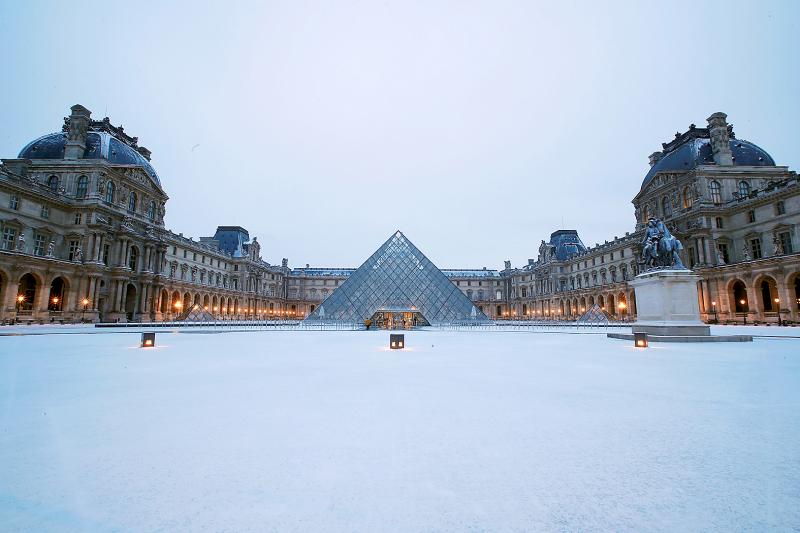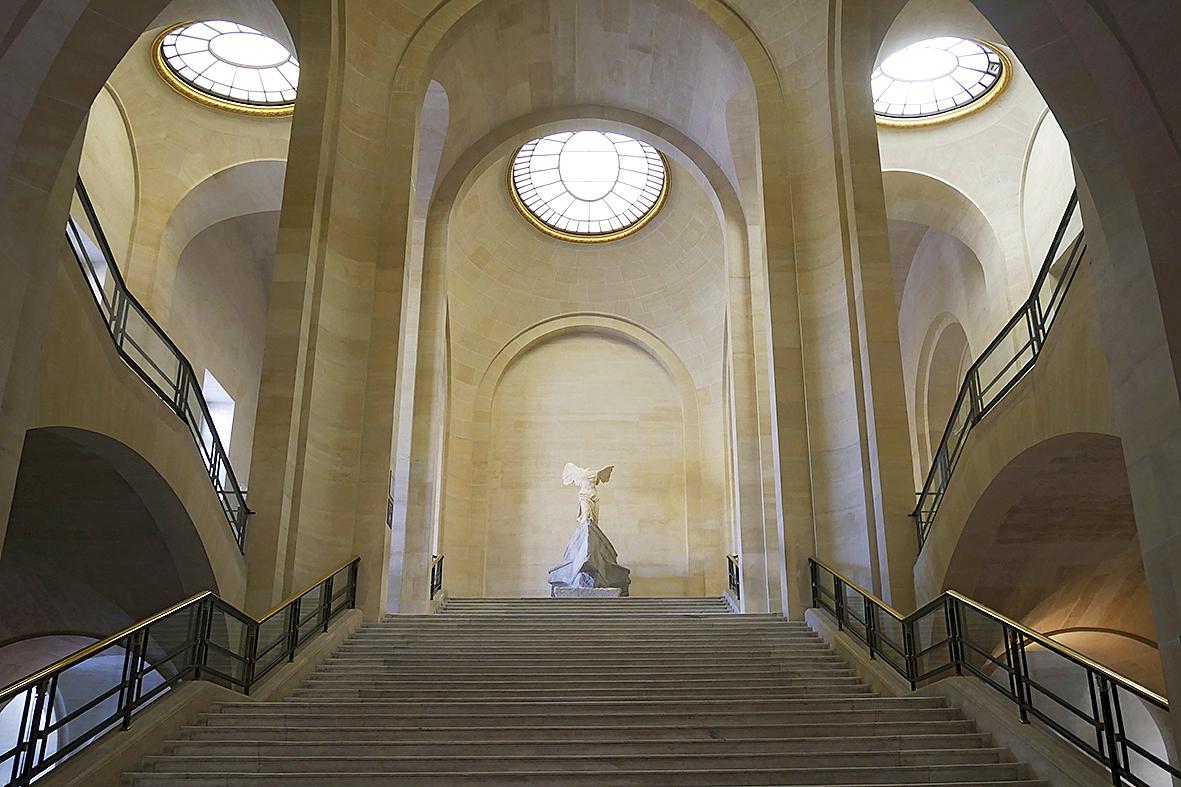Visitor numbers at the world’s top 100 museums and art galleries plunged by 77 percent last year, down from 230 million in 2019 to just 54 million as the COVID-19 pandemic forced closure on an unprecedented scale.
The survey carried out annually by the Art Newspaper for more than 20 years is normally an upbeat one, highlighting which museums had good years and what the most popular exhibitions were, whether in London, New York or Sao Paulo.
The figures for last year, published on Tuesday, were sobering, with museums and galleries ravaged by enforced closure, plummeting visitor numbers and enormous falls in revenue.

Photo: Reuters
The Louvre in Paris maintained its position as the world’s most visited museum thanks largely to the tail end of its Leonardo exhibition, which drew more than 10,000 visitors a day before closing in February last year. Over the year, the museum had 2.7 million visits, down 72 percent from 2019 with an estimated income loss of 90 million euros (US$105.6 million).
Alison Cole, the editor of the Art Newspaper, said it was worth remembering that “in a normal year more than 9 million people would jostle to see the Mona Lisa at the Louvre.”
Tate Modern in London, which staged exhibitions including Andy Warhol and Bruce Nauman, was second in the popularity table with 1.4 million visits, down 77 percent. It was closed for 173 days and said it lost 56 million pounds (US$77 million) in revenue. It pipped the British Museum as the most visited UK museum or art gallery, which can be explained by Tate Modern having remained open for more days in the year.

Photo: AP
The British Museum, which has held the UK top spot for nine out of the last 10 years, was fourth in the global list. It was closed for 208 days — roughly seven months — with visitor numbers down 80 percent to 1.3 million.
Third in the popularity table were the Vatican Museums, with visitor numbers down 81 percent. Fifth was the Reina Sofia in Madrid, which was closed for only 80 days. That compares with 155 days for the National Gallery in London (7th) and 202 days for the Metropolitan Museum of Art in New York (8th).
The most visited Asian museum in the survey was Japan’s 21st Century Museum of Contemporary Art in Kanazawa (9th). It was only closed for 66 days but still recorded a 63 percent drop in visitor numbers.
Cole said the impact of the pandemic on museums had been disastrous and the general mood remained bleak.
“While there is happy anticipation of a May 17 reopening date in the UK, reduced capacity due to COVID measures and a dearth of tourists mean that most large museums are looking at four years until they get back to pre-pandemic health.”
The Art Newspaper said there was a combined total of 41,000 days of enforced closure for the world’s top museums equating to “112 years of missed visits and hundreds of millions of pounds in lost revenue.”
In the US the picture varies from state to state, the survey reveals. Closures there ranged from 75 days (Crystal Bridges Museum of American Art, Arkansas) to 225 days (Smithsonian American Art Museum, Washington DC).
New Zealand, one of the success stories in dealing with the pandemic, has come out comparatively well in the survey, with museums closed for less time than the global average and, when they reopened, few limits on capacity. The least affected of its leading museums was the Christchurch Art Gallery Te Puna o Waiwhetu, which closed for 54 days and recorded a 28 percent drop in visitors.
Other British museums in the survey include the V&A, 13th most popular with 215 days of closure and a visitor fall of 78 percent; and the National Museum of Scotland, 40th in the list with 159 days of closure and an 80 percent fall in visitors.
Not on the list is the National Portrait Gallery in London, which, the survey’s authors note, “chose the perfect time for a planned closure of three years.”

June 9 to June 15 A photo of two men riding trendy high-wheel Penny-Farthing bicycles past a Qing Dynasty gate aptly captures the essence of Taipei in 1897 — a newly colonized city on the cusp of great change. The Japanese began making significant modifications to the cityscape in 1899, tearing down Qing-era structures, widening boulevards and installing Western-style infrastructure and buildings. The photographer, Minosuke Imamura, only spent a year in Taiwan as a cartographer for the governor-general’s office, but he left behind a treasure trove of 130 images showing life at the onset of Japanese rule, spanning July 1897 to

In an interview posted online by United Daily News (UDN) on May 26, current Chinese Nationalist Party (KMT) Chairman Eric Chu (朱立倫) was asked about Taichung Mayor Lu Shiow-yen (盧秀燕) replacing him as party chair. Though not yet officially running, by the customs of Taiwan politics, Lu has been signalling she is both running for party chair and to be the party’s 2028 presidential candidate. She told an international media outlet that she was considering a run. She also gave a speech in Keelung on national priorities and foreign affairs. For details, see the May 23 edition of this column,

The Taiwan People’s Party (TPP) on May 18 held a rally in Taichung to mark the anniversary of President William Lai’s (賴清德) inauguration on May 20. The title of the rally could be loosely translated to “May 18 recall fraudulent goods” (518退貨ㄌㄨㄚˋ!). Unlike in English, where the terms are the same, “recall” (退貨) in this context refers to product recalls due to damaged, defective or fraudulent merchandise, not the political recalls (罷免) currently dominating the headlines. I attended the rally to determine if the impression was correct that the TPP under party Chairman Huang Kuo-Chang (黃國昌) had little of a

At Computex 2025, Nvidia CEO Jensen Huang (黃仁勳) urged the government to subsidize AI. “All schools in Taiwan must integrate AI into their curricula,” he declared. A few months earlier, he said, “If I were a student today, I’d immediately start using tools like ChatGPT, Gemini Pro and Grok to learn, write and accelerate my thinking.” Huang sees the AI-bullet train leaving the station. And as one of its drivers, he’s worried about youth not getting on board — bad for their careers, and bad for his workforce. As a semiconductor supply-chain powerhouse and AI hub wannabe, Taiwan is seeing